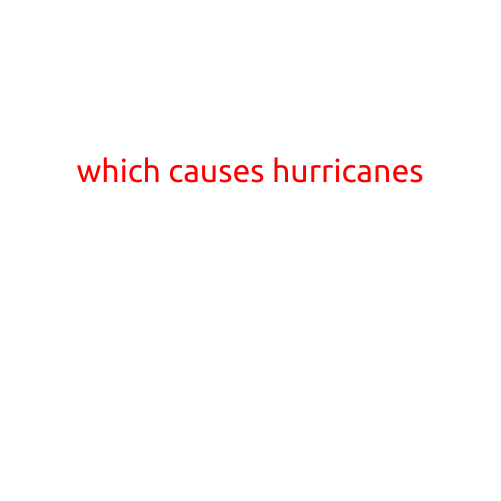
Title: “Which Causes Hurricanes?”
Subtitle: “Understanding the Atmospheric Conditions that Give Rise to these Powerful Storms”
Hurricanes are massive storm systems that can bring catastrophic winds, heavy rainfall, and devastating destruction to coastal communities around the world. But have you ever stopped to think about what causes these powerful storms to form in the first place?
In this article, we’ll take a closer look at the complex factors that come together to create hurricanes. From the warm waters of the tropics to the atmospheric conditions that fuel their growth, we’ll explore the key elements that give rise to these powerful storm systems.
The Tropical Atmosphere: The Perfect Brew
Hurricanes thrive in the warm, tropical waters of the Atlantic, Pacific, and Indian Oceans. The warm waters heat the air above them, causing it to rise and create an area of low pressure. This low-pressure system is the perfect environment for tropical cyclones to form.
Moisture from the Sea
Warm ocean waters play a crucial role in hurricane formation. They provide the moisture that fuels the storm’s growth, allowing it to develop strong winds and heavy rainfall. The warmer the waters, the more moisture they can release into the air, making them more conducive to hurricane formation.
Atmospheric Conditions
In addition to warm waters, hurricanes also require specific atmospheric conditions to develop. These conditions include:
- Low Pressure: Hurricanes need a area of low pressure to form and sustain themselves. This low-pressure system allows air to rise, creating convection currents that drive the storm’s motion.
- High Humidity: Hurricanes thrive in humid environments, where the air is saturated with moisture. This moisture fuels the storm’s growth, allowing it to develop strong winds and heavy rainfall.
- Warm Air: Hurricanes need a layer of warm air near the surface to develop and sustain themselves. This warm air is necessary to fuel the storm’s growth and provide the energy needed to drive its winds.
Wind Shear: The Storm’s Best Friend
Wind shear, or changes in wind direction and speed with height, plays a crucial role in hurricane formation. When wind shear is low, it allows the storm to develop and maintain its circulation, giving it the opportunity to grow and intensify.
Upper-Level Disturbances: The Spark that Ignites
Upper-level disturbances, such as troughs of low pressure or areas of fronts, can provide the spark that sets a hurricane in motion. These disturbances can create an area of lift, allowing the storm to develop and grow.
Conclusion
Hurricanes are complex storms that require specific atmospheric and oceanic conditions to form and intensify. From the warm waters of the tropics to the atmospheric conditions that fuel their growth, each element plays a crucial role in the development of these powerful storm systems.
As we continue to monitor the latest hurricane forecasts and warnings, it’s essential to understand the science behind these storms. By recognizing the key factors that contribute to hurricane formation, we can better prepare for and respond to these powerful storm systems, ultimately saving lives and reducing the impact of hurricane-related disasters.
Remember, understanding hurricanes is key to staying safe during these powerful storms. Stay informed, stay prepared, and stay safe during hurricane season!





